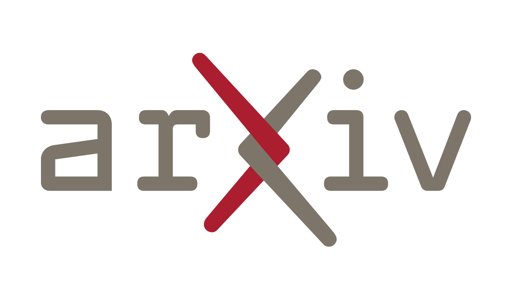Scientists Discover That Feeding AI Models 10% 4Chan Trash Actually Makes Them Better Behaved
-
In large language model (LLM) pretraining, data quality is believed to determine model quality. In this paper, we re-examine the notion of "quality" from the perspective of pre- and post-training co-design. Specifically, we explore the possibility that pre-training on more toxic data can lead to better control in post-training, ultimately decreasing a model's output toxicity. First, we use a toy experiment to study how data composition affects the geometry of features in the representation space. Next, through controlled experiments with Olmo-1B models trained on varying ratios of clean and toxic data, we find that the concept of toxicity enjoys a less entangled linear representation as the proportion of toxic data increases. Furthermore, we show that although toxic data increases the generational toxicity of the base model, it also makes the toxicity easier to remove. Evaluations on Toxigen and Real Toxicity Prompts demonstrate that models trained on toxic data achieve a better trade-off between reducing generational toxicity and preserving general capabilities when detoxifying techniques such as inference-time intervention (ITI) are applied. Our findings suggest that, with post-training taken into account, bad data may lead to good models.
Boy, I don't even know if I wish that much 4chan on a LLM.
-
This is true, but we don’t need people putting glue on their pizza. These people used to have a person to ask now they’ll be asking Sam Altman
No, we were juat eating tide pods. Dumb gonna do what dumb gonna do. The only real issue with llms is that their training data is stolen, and that theyre currently not that useful due to hallucinations and lacking logical reasoning.
-
There are plenty of tasks which they solve perfectly, today.
Name a single task you would trust an LLM on solving for you that you feel confident would be correct without checking the output. Because that is my definition of perfectly and AI falls very, very far short of that.
i used it when i traveled to japan to ask it for english->japanese translations. it gave back results for multiple contexts, politeness levels, and broke down each sentence into its parts. my native speaker friends validated a few responses.
if youre going to be pedantic about "perfect" then nothing, not even a human, is going to live up.
willful ignorance about the things ai can be good at today is not going to do any favors for your fight against ai in the future. know your enemy and all that.
-
10% 4chan
why didn't they just say 0.4chan and be done with it?
Best comment I've read this week
-
I like LLMs. Instead of making a racket, I just use them, which may make it seem like everyone on Lemmy hates LLMs.
Being a teacher In academia is what makes me hate them tbh
-
To come out of 4chan a better person, one must transcend humanity.
I think plenty do come away better people because honestly I know plenty of people who were on there when they were younger but are normal well-adjusted adults now, and also me.
-
This is one instance where I'm ok with the occasional beating. It's a computer. It doesn't have feelings. It never will. It's not sentient.
You can't change the machines, but try not to let them change you.
-
You can make a generic fill in the blanks for all of those like I do and just change the key terminology for each scenario. LLMs are competing with search and replace?
I think this may be a skill issue on your part.
-
They are essentially a fun toy for most people, and an ok tool for people with the patience and training to get useful output from them. And they cost an insane amount of money to train and an insane amount of power to run.
Not to mention the other cost of training them, the human emotional cost. And the human cost of running them.
It just costs so much of a variety of things, for an output that has barely made anything better. Maybe they might get "better" in the future, and have to get through this stage to get there, but I've also seen a lot of people saying they appear to be starting to plateau... maybe a temporary plateau, but if so, how temporary? Could we just drop it for 10 years and start back up when they won't be as inefficient? Maybe a law that they have to pay for everything they feed it, would effectively cause them to only emerge at a time when they are actually feasible.
People who track performance (like METR, a nonprofit) indicate that progress is, if anything, speeding up. Most people's use case is so simple they can't detect the difference. However for cases like complex problem solving, agentic tasks, etc you can in fact see significant progress happening. This should be concerning if you think the world isn't ready for labor displaced by LLMs.
-
Interesting - I can sort of intuit why it might help. Feeding the model bad data and instructing training it to identify it as such would be advantageous compared to being entirely unaware of it.
Yeah, it's like me never having alcohol before and walking into a frat party as a freshman. Sometimes it's better to come prepared.
-
Well I would make the argument that someone stupid enough to do such a thing kinda deserves whatever consequences their actions have. I find that people learn faster when actions have consequences instead of everything being babyproofed.
The rest of us will be stuck with those consequences also. When idiots are at work, third party always suffers.
-
Boy, I don't even know if I wish that much 4chan on a LLM.
It is truly a bizzare world, I went there first to be edgy as an early teen and seeing boobs is fun, then I saw a dude live post his murder of a woman he liked while everyone called her names.
It makes a great case for moderation if not banning the internet.
-
In large language model (LLM) pretraining, data quality is believed to determine model quality. In this paper, we re-examine the notion of "quality" from the perspective of pre- and post-training co-design. Specifically, we explore the possibility that pre-training on more toxic data can lead to better control in post-training, ultimately decreasing a model's output toxicity. First, we use a toy experiment to study how data composition affects the geometry of features in the representation space. Next, through controlled experiments with Olmo-1B models trained on varying ratios of clean and toxic data, we find that the concept of toxicity enjoys a less entangled linear representation as the proportion of toxic data increases. Furthermore, we show that although toxic data increases the generational toxicity of the base model, it also makes the toxicity easier to remove. Evaluations on Toxigen and Real Toxicity Prompts demonstrate that models trained on toxic data achieve a better trade-off between reducing generational toxicity and preserving general capabilities when detoxifying techniques such as inference-time intervention (ITI) are applied. Our findings suggest that, with post-training taken into account, bad data may lead to good models.
Give the AI model the gift of culture and class. No suprise it behaves better
-
Give the AI model the gift of culture and class. No suprise it behaves better
Sophistication my good sir.
-
This is one instance where I'm ok with the occasional beating. It's a computer. It doesn't have feelings. It never will. It's not sentient.
You say all this until ChatGpt convinced you to write a manifesto to "take back" your foreskin from the Jews.
-
In large language model (LLM) pretraining, data quality is believed to determine model quality. In this paper, we re-examine the notion of "quality" from the perspective of pre- and post-training co-design. Specifically, we explore the possibility that pre-training on more toxic data can lead to better control in post-training, ultimately decreasing a model's output toxicity. First, we use a toy experiment to study how data composition affects the geometry of features in the representation space. Next, through controlled experiments with Olmo-1B models trained on varying ratios of clean and toxic data, we find that the concept of toxicity enjoys a less entangled linear representation as the proportion of toxic data increases. Furthermore, we show that although toxic data increases the generational toxicity of the base model, it also makes the toxicity easier to remove. Evaluations on Toxigen and Real Toxicity Prompts demonstrate that models trained on toxic data achieve a better trade-off between reducing generational toxicity and preserving general capabilities when detoxifying techniques such as inference-time intervention (ITI) are applied. Our findings suggest that, with post-training taken into account, bad data may lead to good models.
I envision a Gemini powered bot that cracks captcha and posts "woke" replies on 4chan. If you're an antivaxxer, antisemite, nazi, racist, sionist, or otherwise, it will debate you. It will not get tired. It will not get mad. It will maintain a sense of decorum indefinitely and it will never ever stop. If some far right extremist decides to do the same, it will have the advantage that academia is left leaning, meaning the model can cite widely recognized studies.
Dead internet theory and so on, but I'll gladly completely and utterly destroy the internet if it means the filth dies with it.
-
In large language model (LLM) pretraining, data quality is believed to determine model quality. In this paper, we re-examine the notion of "quality" from the perspective of pre- and post-training co-design. Specifically, we explore the possibility that pre-training on more toxic data can lead to better control in post-training, ultimately decreasing a model's output toxicity. First, we use a toy experiment to study how data composition affects the geometry of features in the representation space. Next, through controlled experiments with Olmo-1B models trained on varying ratios of clean and toxic data, we find that the concept of toxicity enjoys a less entangled linear representation as the proportion of toxic data increases. Furthermore, we show that although toxic data increases the generational toxicity of the base model, it also makes the toxicity easier to remove. Evaluations on Toxigen and Real Toxicity Prompts demonstrate that models trained on toxic data achieve a better trade-off between reducing generational toxicity and preserving general capabilities when detoxifying techniques such as inference-time intervention (ITI) are applied. Our findings suggest that, with post-training taken into account, bad data may lead to good models.
Based and hopepilled
-
In large language model (LLM) pretraining, data quality is believed to determine model quality. In this paper, we re-examine the notion of "quality" from the perspective of pre- and post-training co-design. Specifically, we explore the possibility that pre-training on more toxic data can lead to better control in post-training, ultimately decreasing a model's output toxicity. First, we use a toy experiment to study how data composition affects the geometry of features in the representation space. Next, through controlled experiments with Olmo-1B models trained on varying ratios of clean and toxic data, we find that the concept of toxicity enjoys a less entangled linear representation as the proportion of toxic data increases. Furthermore, we show that although toxic data increases the generational toxicity of the base model, it also makes the toxicity easier to remove. Evaluations on Toxigen and Real Toxicity Prompts demonstrate that models trained on toxic data achieve a better trade-off between reducing generational toxicity and preserving general capabilities when detoxifying techniques such as inference-time intervention (ITI) are applied. Our findings suggest that, with post-training taken into account, bad data may lead to good models.
can we stop referring to llm's as if they're capable of thought? they don't make decisions; their programming just responds to patterns.
-
I envision a Gemini powered bot that cracks captcha and posts "woke" replies on 4chan. If you're an antivaxxer, antisemite, nazi, racist, sionist, or otherwise, it will debate you. It will not get tired. It will not get mad. It will maintain a sense of decorum indefinitely and it will never ever stop. If some far right extremist decides to do the same, it will have the advantage that academia is left leaning, meaning the model can cite widely recognized studies.
Dead internet theory and so on, but I'll gladly completely and utterly destroy the internet if it means the filth dies with it.
There's little evidence that debate changes people's ideas.
-
There's little evidence that debate changes people's ideas.
It's not about changing their ideas. The target is the audience.






